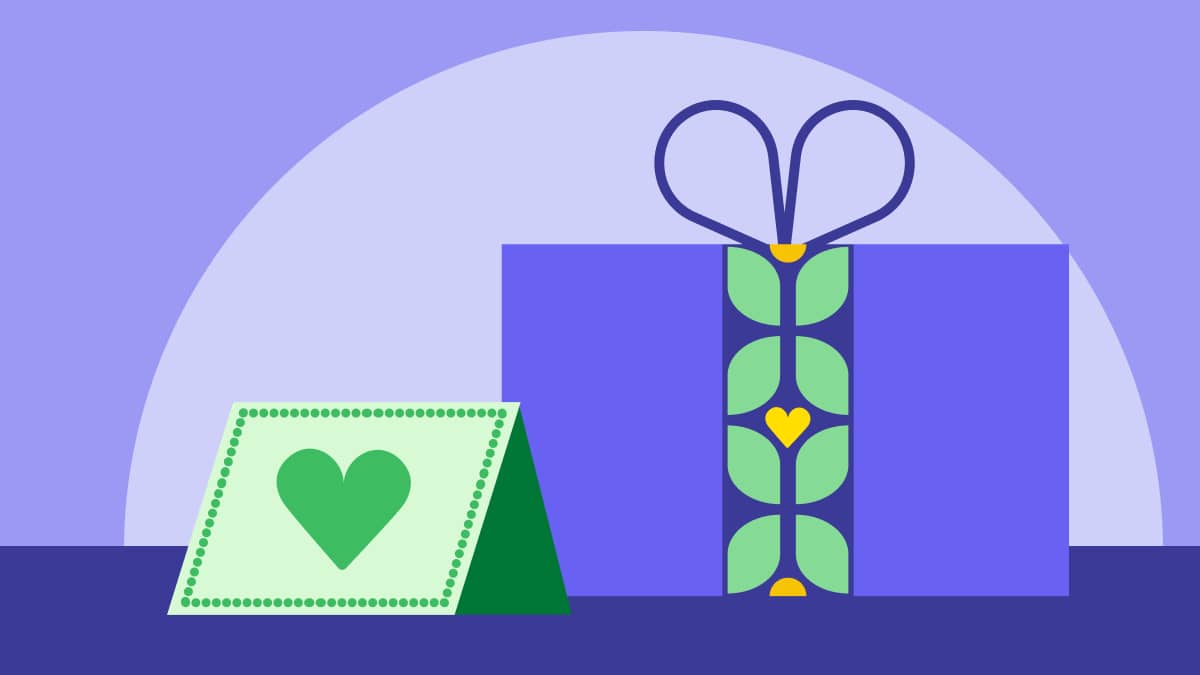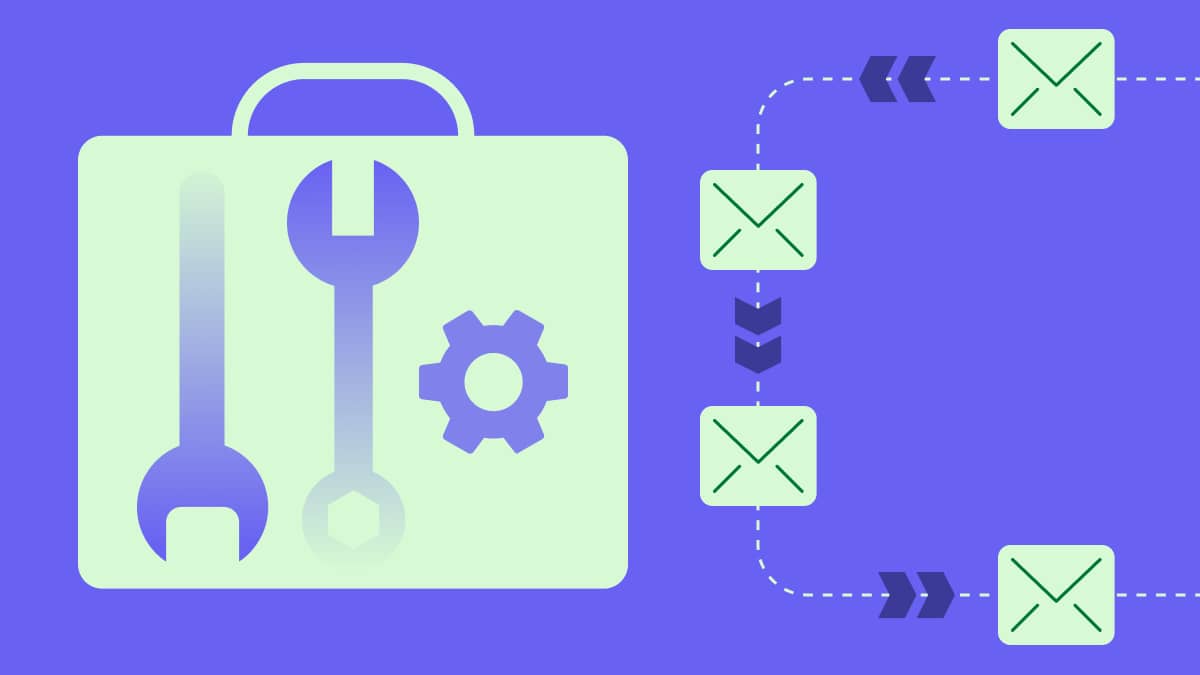Getting your emails to stand out in a crowded inbox and incentivizing your target audience to open and click through is no easy feat.
Email personalization is one way marketers and sales teams can grab attention, build unique and effective emails and improve digital marketing campaigns. Case studies show that personalized email messages can improve click-through rates by 14% and conversion rates by 10%.
In this article, we dive into what a personalized email is and why it should be part of your email marketing strategy. We’ll also share some of our favorite personalized email examples.
What is a personalized email?
A personalized email uses customer data to create a more relevant communication experience. Companies use personalization to create individually targeted emails that address a subscriber as a real person (e.g. using their name) and to reference relevant things about them (e.g. their recent social media activity or work accomplishments).
Adding a personal touch humanizes the experience, which helps the sender and reader connect meaningfully. This is in stark contrast to receiving robotic emails that are clearly automated or part of a generic blast.
Email personalization techniques include:
Using personal data such as the subscriber’s name, date of birth or address
Including previously purchased products to make product recommendations
Recording the number of times they have logged into their client account or other account activity
Identifying which time zones subscribers live in to schedule emails accordingly
When done well, email personalization has the effect of making a subscriber feel the marketing efforts are designed specifically for them, which improves email campaign metrics and profitability.
How to personalize emails
To add personalization to your marketing campaigns, first you need to collect the information you’ll use to personalize them. Next, you can segment your subscriber database and create personalized email content for each group.
Collect data
Here are some of the data-collection methods you can use for email personalization strategies.
1. Sign-up forms
Registration for your email list is one of your best opportunities to collect data. You can easily obtain demographic information and personal details from the sign up form. You can also go a step further and offer the new subscriber a chance to choose how frequently they receive your emails.
However, make sure your sign-up form isn’t too long, as an extended sign-up process can deter people from subscribing (people are busy and will likely move on).
2. Update profile form
To get more information about recipients’ interests, needs, habits, gender, age, location, occupation, social media usage (e.g. LinkedIn or Instagram), and other data, use a profile update form. If you have LeadBooster, this is available under the web sign-up form section in your Pipedrive account.
This information is useful when crafting personalized email subject lines (which elicit higher open rates), as it gives you insight into what words and personalized subject lines might intrigue them.
3. Online surveys
Through online surveys, you can get additional information about your subscribers and create segments automatically according to their survey responses.
For example, say you talk about sales and marketing in your newsletter. In a survey, you may find out that a subscriber is only interested in sales topics and finds the marketing messaging irrelevant. In that case, you could segment that reader into a “sales only” segment and tailor those emails to only include sales-related information.
4. Individual activity
How a subscriber interacts with your emails or marketing platform also offers an opportunity for personalization.
For example, knowing if a subscriber opened the previous email in your email sequence can determine which email you send them next.
You can send personalized emails to different groups, such as those who haven‘t opened your newsletters for a while or those who open but never click through.
Similar emails, sometimes referred to as trigger emails, are highly beneficial for ecommerce stores. For example, subscribers who abandon their shopping cart and don’t complete their transactions can be reminded to return and complete their purchase with abandoned cart emails.
5. Unsubscribe page
If people want to unsubscribe from your email list, you still have an opportunity to persuade them to personalize their settings instead.
After clicking the unsubscribe link, guide them to a landing page, or preference center, where you have a call to action (CTA) to stay subscribed but receive emails less frequently or to only receive the most relevant content (like in the sales-content example above)..
Segment your audience
Having collected the data you need for your personalization tactics, you can now segment your email list. This helps with automation and targeting, as you can send relevant content to the right groups of people.
Here are some examples of segments and the different content they might need.
Potential customers
Welcome emails
Encouragement to make a first purchase
Education about your products and services
Information about the company and industry
Existing customers
Offers of additional products or services
Information about your loyalty program
Requests for feedback or reviews
Inactive subscribers
Re-engagement campaigns with special offers
Personalized birthday emails
Information about new product launches of
Build your personalized content
With your emails mapped out, the final step is building them in your email marketing platform. Here are a few different ways to do that:
Use dynamic content
You can send personalized messages without manually creating varied emails by using Pipedrive’s dynamic content email service feature. This allows you to create multiple versions of content within one campaign.
To get started, pre-define your conditions (e.g. those in the “sales group” receive only sales-related content).
Next, insert the dynamic content code into the email. That’s it! When subscribers open, they’ll see different content according to your pre-defined conditions.
Dynamic content will save both your time and resources. Note that both pictures and text can be varied by using this feature.
Use dynamic RSS campaigns
RSS allows your email newsletter content to be placed automatically when your email marketing campaign is sent. This feature is widely used by news portals, bloggers and even online shops. By combining RSS to emails with dynamic content, you can automate your campaigns and segment your database to send emails to each target group.
3 examples of high-converting personalized emails
The best way to learn how to personalize emails is to look at real world examples. Here are three companies that do it well.
1. Asos
Below is an example of how Asos uses email personalization beyond just the subscriber’s name. In this email template, you can see that they have sent out a gift card to the user on their birthday. This is a great way to show that you value your customers and to send out potential sales messages.

2. Chewy
Here is another example of how to personalize email, this time using purchase history from Chewy.
Notice how the recent purchases are listed, complete with an image and an invitation to leave a review. The email increases user engagement with the brand, while also working to develop a one-to-one connection. It also presents other opportunities to showcase the brand’s strengths, such as free delivery for orders over $49 and more.
In these two instances, personalization in email marketing can be easily applied based on information that the company already possesses.

3. JubileeGift
Sending out a personalized welcome email, confirmation email or transactional email helps increase your brand equity and keeps your company top of mind. . That’s because emails of this nature are largely automated, so leveraging dynamic content is an easy way to stand out in a sea of sameness.
Here is an example of an order confirmation email from JubileeGift:

Notice how JubileeGift includes the first name with a 10% product voucher as a reward for the user making the purchase.
All of these personal messages can make the customer experience more memorable and encourage repeat purchases.
Final thoughts
Personalized email marketing is one of the most effective methods to increase customer interest and loyalty in an age where readers are burdened with information and offers.
As you begin considering how to personalize emails, we recommend that you spend some time segmenting your database to be able to create relevant, targeted and personalized emails that will increase your email marketing effectiveness and ROI.





